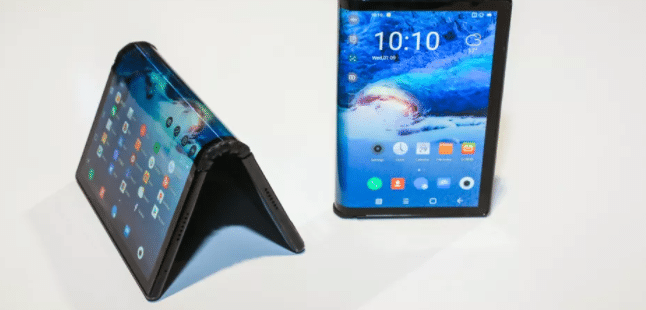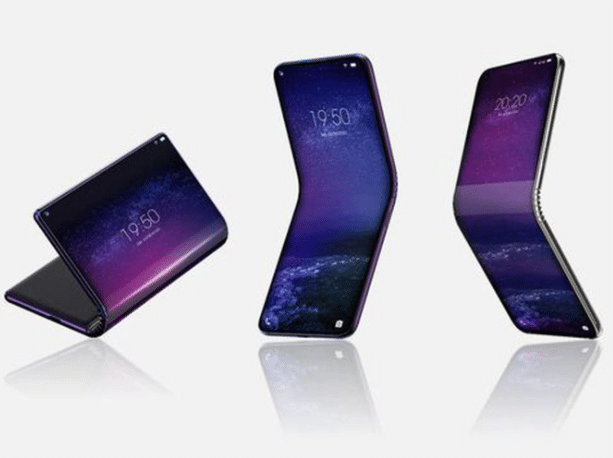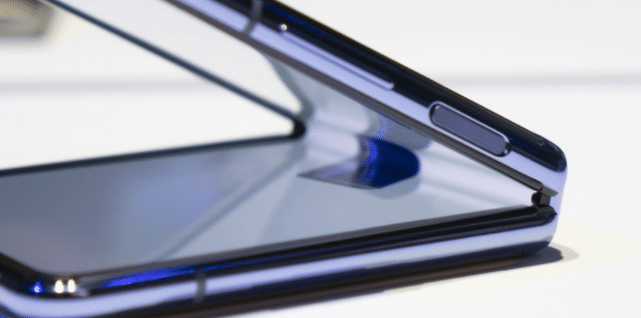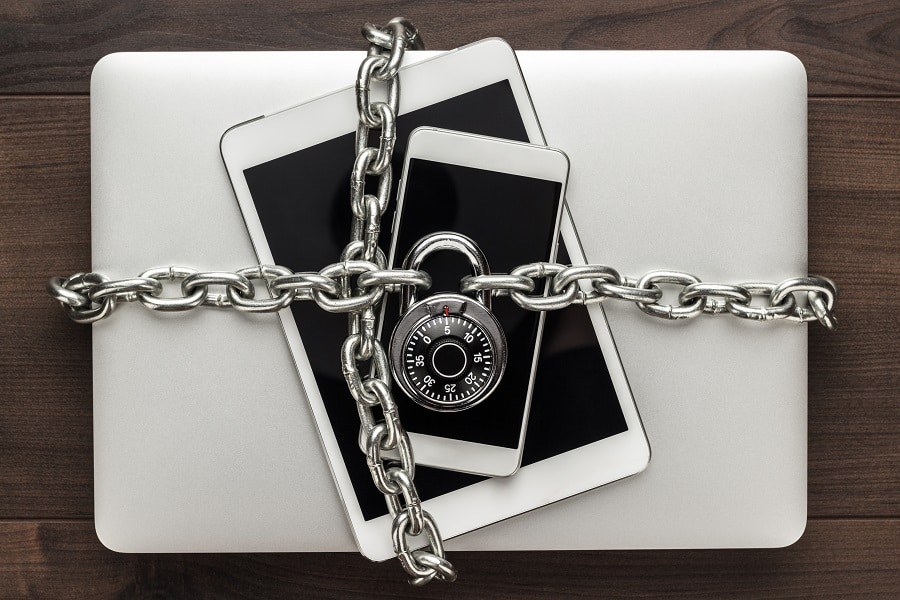More prominent brands and smartphone companies have already released their foldable series, and we cannot be more thrilled. There are foldable phones, flip phones, phones with wrap-around displays, rolling phones, and much more. But before we discuss these, let’s have a quick look at what foldable phones are and their pros and cons.
Contents
What Are Foldable Phones?

A bendable phone is much like the simpler smartphones in the market regarding technology and features, except that they have a hinged flexible display, allowing you to bend the mobile phone without breaking it. This flexibility is due to the plastic OLED display instead of the traditional glass display, which, unlike the former, could not withstand the required bend radius.
Although there have been several issues with the plastic display new technologies such as ultra-thin glass and metal are being explored to improve the experience over time.
Why Foldable Phones?

If the human tendency to innovate and explore technological advances is not enough to explain foldable phones for you, there are several other reasons and explanations on how foldable phones are here to flip the future for the better.
Below are some pros of having a phone that folds.
- It makes commuting easier – fold it and put it into the pocket when not using, open it when seated, and travel seamlessly.
- It’s multipurpose – the ability to serve both as a tablet and a mobile phone is the defining character, reducing the need to have multiple devices.
- Smaller dimensions and space-saving.
- It gives an increased circuit density and wide viewing angle.
What Is A Clamshell?

For all those unaware, clamshell foldables are unlike the typical ones, do not unfold to reveal a tablet-sized display; instead, they unfold to a standard display size of a regular smartphone. It is ideal for those who wished for a smaller handheld device, fitting any pocket size.
The Best Foldable Smartphones In The Market 2021

With many brands putting forward their range of smartphones with a foldable display, it is hard to decide what’s best. Especially since it’s still in the process of trials and is comparatively new in the market, with few reviews or comparisons online.
Let us look at some of such foldable smartphones readily available in the market, their specifications.
Samsung Galaxy Z Flip
This smartphone by Samsung is one of the highest-rated clamshell foldable smartphones in the little market of this new technology. It came out in February 2020 and weighs about 183 grams.
The specifications are one of the most attractive features of the Samsung Galaxy Z flip, with 8GB of RAM and a Snapdragon 855 Plus chipset. The dual rear cameras (12MP f/1.8 primary and 12MP f/2.2 ultrawide) and 3,300 mAh battery life might not be as good as standard smartphones with brick form factor but provide a decent user experience.
For all those worried, this Samsung model comes with a 6.7-inch display (plastic) in full HD, with plastic bumper edges to withstand every aggressive snap. You can leave it folded at any angle with software that brilliantly separates the top and bottom half interface.
Limitations –
The 1.1 inches long front display is undoubtedly a put-off for many users. The hefty price tag for an experience that does not live up to the expectation and better alternatives in the market at lower prices is something you need to consider before investing in the Samsung Galaxy Z flip.
However, for anyone wishing to experiment with a foldable mobile phone, the Samsung Galaxy Z flip is a must-consider for all the good reasons.
Motorola Razr 2020
Motorola Razr is yet another smartphone in the series of clamshell foldable phones. It came out in September 2020, the device’s weight is 192 grams, with a better and improved experience and technology for the users than Motorola’s earlier models.
The phone has a big 2.7-inch display but also has better software improvements, letting you text, preview selfies, and do basic browsing effectively. One could take flawless selfies without flipping the phone open with the 48 MP lens and open it up to access the front 20 MP camera.
Limitations –
The device does not allow you to keep it perched partway; it is either fully folded or is flipped open like standard smartphones. It has a narrow pixel resolution, far inferior to the low-budget smartphones today with HD display.
It has a Snapdragon 765G chipset, a non-expandable 256GB memory, and a 2800 mAh battery are all minimal for a device with an exorbitant price.
Samsung Galaxy Fold
One of Samsung’s earliest models in the series of foldable phones is the Samsung Galaxy fold, and came out in September of the year 2019. Unlike the clamshell foldable, the device gives an impressive table-sized display once unfolded.
The specs include – a foldable 7.3-inch QHD Dynamic AMOLED display on the inside and a 4.6-inch HD+ Super AMOLED screen on the front, Snapdragon 855 chipset, 12 GB of RAM, a 4380mAh battery life, 512 GB storage, and a total of whopping six cameras.
A 16MP and a pair of 12 MP lens on the back, a 10 MP camera in the front with a 10MP and 8MP dual-lens camera on the inside make it one of the most efficient foldable models early in the race.
The device’s three-app multitasking allows one to move seamlessly from a screen to another and switch displays as you fold and unfold between sessions. Though it was higher at the time of release, the price has come down significantly ever since, making it a cost-effective investment.
Limitations –
Apart from apps that are not supported on the full unfolded screen, Durability issues are the two main concerns users might encounter.
Samsung Galaxy Z Fold 2
This model came out in September 2020. It has an external display for the basic tasks, revealing a much grander display when flat.
Taking the criticism seriously, Samsung switched the small display from Galaxy fold to a whopping 6.2-inch display in this newer version, expanding from edge to edge. This feature makes it seem like a regular and sleek standard smartphone when folded and a brilliant 7.6-inch tablet-like device when unfolded.
Both of the screens have a punch-hole camera, giving it a modernized look. A Snapdragon 865 plus chipset, 12GB of RAM, non-expandable 256GB of storage, a 4500 mAh battery, and 5G support are all impressive specs compared to other foldable devices.
Limitations –
The cost of Galaxy Z fold 2 is double the price of Samsung’s 2020 flagship Galaxy S20, making it a significant pricey buy.
Other Limitations Of A Foldable Smartphone
- The foldable smartphones are not scratch or dust resistant as most standard glass display smartphones.
- They are not as durable as a standar smart phone.
- Folding and unfolding for an extended period can damage the phone, with no guarantee on how long it could hold up. The stress from folds on the same seam over time can quickly wear the device out.
- Apart from an already high initial price, the hefty repair cost is enough to make it a bad deal. Make sure to not crack the screen!
- There is alot these companies can do to improve these smartphones to make them better. For anyone buying them right now is acting as a prototype tester.
Conclusion
The technological advancement from keypad phones to flip phones, touch screens, and foldable smartphones is brilliant and applaudable. However, the fact that a lot is yet missing and that extensive research needs to be done cannot be denied when it comes to this latest foldable trend.


